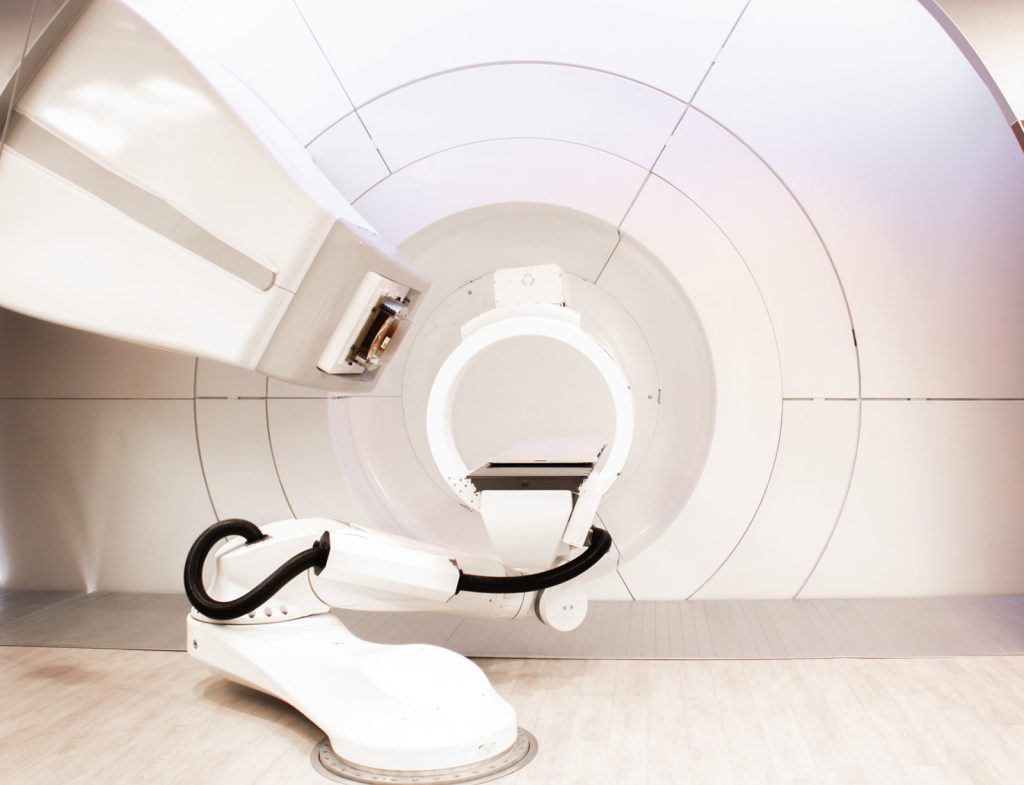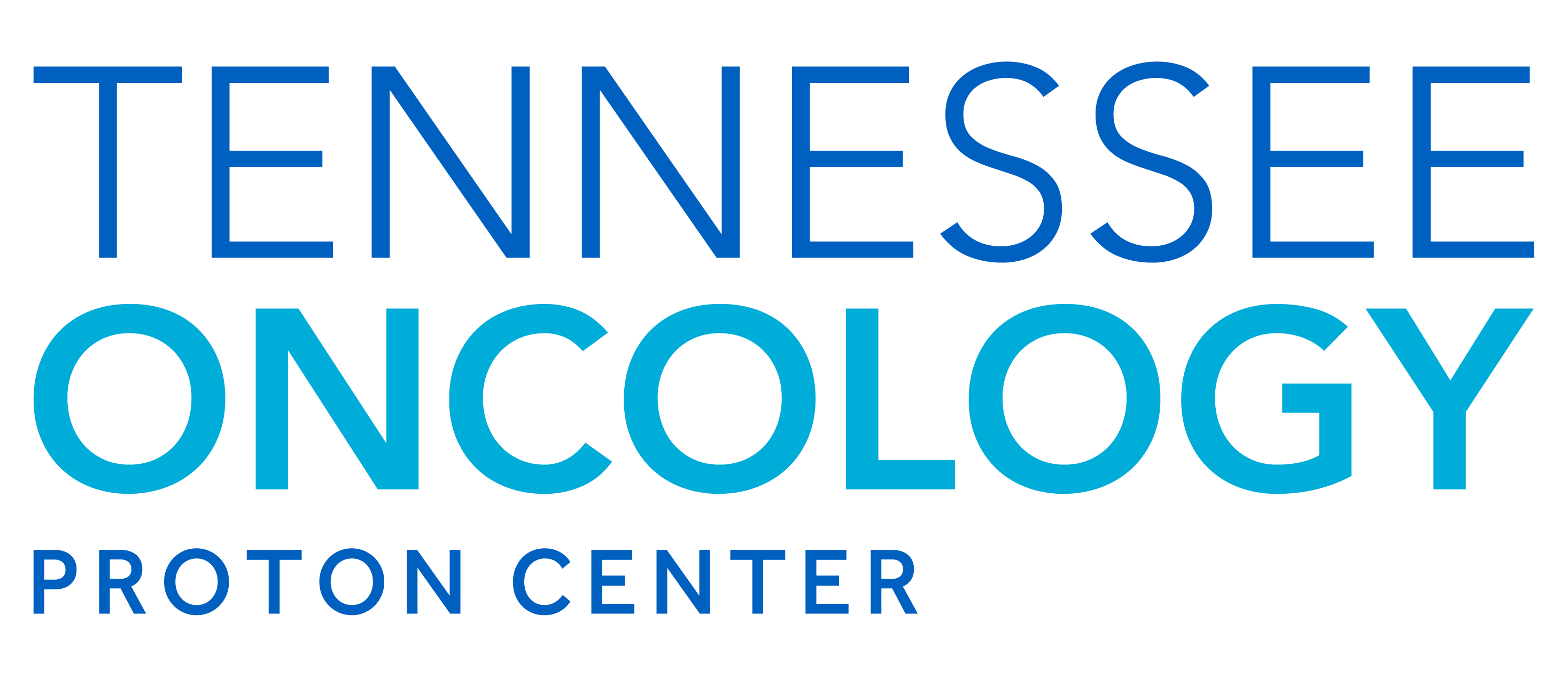Proton Beam Therapy References
References to Guide Decision Making
This page serves as a curated collection of clinical references and published research supporting the information presented throughout the Tennessee Oncology Proton Center website. We believe in transparency and empowering patients with access to the same scientific evidence that guides our care decisions. Whether you are exploring treatment options or seeking deeper insight into the benefits and outcomes of proton therapy, this resource is here to support your understanding. We invite patients, families, and referring providers to explore these materials and see the foundation behind our commitment to evidence-based, patient-centered cancer care.

Reference Library
Comparative effectiveness study of patient-reported outcomes after proton therapy or intensity-modulated radiotherapy for prostate cancer
Hoppe BS, Michalski JM, Mendenhall NP, et al
Patients treated with proton therapy reported fewer problems with bowel urgency and frequency than those treated with IMRT for prostate cancer.
Click Here
Five-year outcomes from 3 prospective trials of image-guided proton therapy for prostate cancer
Mendenhall NP, Hoppe BS, Nichols RC, et al
In a five-year follow-up study of image-guided proton therapy for prostate cancer, patients reported high quality of life and low toxicity.
Click Here
Four-Year Outcomes From a Prospective Phase II Clinical Trial of Moderately Hypofractionated Proton Therapy for Localized Prostate Cancer
Grewal AS, Schonewolf C, Min EJ, et al.
A four-year prospective phase II study demonstrated that moderately hypofractionated proton therapy is effective and well-tolerated for localized prostate cancer.
Click Here
Proton Therapy for Primary Breast Cancer.
Hug EB
Proton therapy for breast cancer significantly reduces radiation exposure to the heart and lungs, minimizing long-term cardiac risks.
Click Here
Radiation-induced risk of ischemic heart disease following breast cancer radiotherapy in Denmark, 1977-2005.
Laugaard Lorenzen E, Christian Rehammar J, Jensen MB, Ewertz M, Brink C.
Radiotherapy for breast cancer increases the risk of ischemic heart disease due to incidental heart exposure.
Click Here
Potential Morbidity Reduction With Proton Radiation Therapy for Breast Cancer.
Braunstein LZ, Cahlon O.
Proton therapy for breast cancer offers superior heart and lung sparing compared to photon therapy, reducing long-term cardiopulmonary risks in appropriately selected patients.
Click Here
Proton beam versus photon beam dose to the heart and left anterior descending artery for left-sided breast cancer.
Lin LL, Vennarini S, Dimofte A, et al.
Proton therapy significantly reduces radiation dose to the heart and left anterior descending artery compared to photon therapy in left-sided breast cancer.
Click Here
Proton Therapy for Breast Cancer: A Consensus Statement From the Particle Therapy Cooperative Group Breast Cancer Subcommittee.
Mutter RW, Choi JI, Jimenez RB, et al.
Proton therapy for breast cancer offers significant dosimetric advantages by reducing radiation exposure to the heart and lungs, potentially lowering the risk of long-term cardiopulmonary complications.
Click Here
National Cancer Database Analysis of Proton Versus Photon Radiation Therapy in Non-Small Cell Lung Cancer
Higgins KA, O’Connell K, Liu Y, et al.
A National Cancer Database analysis indicates that proton therapy for non-small cell lung cancer is associated with improved overall survival compared to photon therapy.
Click Here
Cardiopulmonary Toxicity Following Intensity-Modulated Proton Therapy (IMPT) Versus Intensity-Modulated Radiation Therapy (IMRT) for Stage III Non-Small Cell Lung Cancer.
Yu NY, DeWees TA, Voss MM, et al.
Intensity-modulated proton therapy (IMPT) is associated with reduced cardiopulmonary toxicity compared to intensity-modulated radiation therapy (IMRT) in patients with stage III non-small cell lung cancer.
Click Here
Phase 2 Study of Stereotactic Body Radiation Therapy and Stereotactic Body Proton Therapy for High-Risk, Medically Inoperable, Early-Stage Non-Small Cell Lung Cancer.
Nantavithya C, Gomez DR, Wei X, et al.
A Phase 2 study found that stereotactic body proton therapy (SBPT) for high-risk, medically inoperable early-stage non-small cell lung cancer is feasible and shows promising local control with acceptable toxicity.
Click Here
Comparison of particle beam therapy and stereotactic body radiotherapy for early stage non-small cell lung cancer: A systematic review and hypothesis-generating meta-analysis.
Chi A, Chen H, Wen S, Yan H, Liao Z.
A systematic review found that particle beam therapy may offer improved local control and reduced toxicity compared to stereotactic body radiotherapy for early-stage non-small cell lung cancer.
Click Here
Acute hospitalizations after proton therapy versus intensity‐modulated radiotherapy for locally advanced non–small cell lung cancer in the durvalumab era.
Iocolano M, Yegya‐Raman N, Friedes C, et al.
Proton therapy for locally advanced non–small cell lung cancer is associated with fewer 90-day acute hospitalizations compared to intensity-modulated radiotherapy.
Click Here
Charged particle therapy versus photon therapy for paranasal sinus and nasal cavity malignant diseases: a systematic review and meta-analysis
Patel SH, Wang Z, Wong WW, et al.
A systematic review found that proton therapy may offer improved overall and disease-free survival compared to photon therapy for malignant tumors of the nasal cavity and paranasal sinuses.
Click Here
Acute toxicity in comprehensive head and neck radiation for nasopharynx and paranasal sinus cancers: cohort comparison of 3D conformal proton therapy and intensity modulated radiation therapy.
McDonald MW, Liu Y, Moore MG, Johnstone PA
Proton therapy reduces feeding tube use and pain medication needs compared to IMRT for nasopharynx and paranasal sinus cancers.
Click Here
Comparative analysis of acute toxicities and patient reported outcomes between intensity-modulated proton therapy (IMPT) and volumetric modulated arc therapy (VMAT) for the treatment of oropharyngeal cancer.
Manzar GS, Lester SC, Routman DM, et al.
Intensity-modulated proton therapy (IMPT) for oropharyngeal cancer results in fewer acute toxicities and better patient-reported outcomes compared to volumetric modulated arc therapy (VMAT).
Click Here
Proton beam radiation therapy results in significantly reduced toxicity compared with intensity-modulated radiation therapy for head and neck tumors that require ipsilateral radiation.
Romesser PB, Cahlon O, Scher E, et al.
Proton beam radiation therapy (PBRT) for ipsilateral head and neck tumors significantly reduces radiation exposure to surrounding healthy tissues compared to intensity-modulated radiation therapy (IMRT).
Click Here
Proton Therapy for Head and Neck Cancers.
Blanchard P, Gunn GB, Lin A, et al.
Proton therapy offers dosimetric advantages over photon therapy in head and neck cancers, potentially reducing radiation exposure to surrounding healthy tissues.
Click Here
A Multidisciplinary Orbit-Sparing Treatment Approach That Includes Proton Therapy for Epithelial Tumors of the Orbit and Ocular Adnexa.
Holliday EB, Esmaeli B, Pinckard J, et al.
A multidisciplinary orbit-sparing approach combining surgery and proton therapy achieved high local control with minimal toxicity in patients with malignant epithelial tumors of the orbit and ocular adnexa.
Click Here
The Biological Basis for Enhanced Effects of Proton Radiation Therapy Relative to Photon Radiation Therapy for Head and Neck Squamous Cell Carcinoma.
Wang L, Fossati P, Paganetti H, et al.
Proton therapy for head and neck squamous cell carcinoma offers comparable tumor control to photon therapy while reducing treatment-related toxicities, owing to its unique physical and biological properties.
Click Here
Proton Therapy for Major Salivary Gland Cancer: Clinical Outcomes
Hanania AN, Zhang X, Gunn GB, et al.
Proton therapy provides effective tumor control with minimal toxicity in patients with major salivary gland cancers.
Click Here
Toxicity Profiles and Survival Outcomes Among Patients With Nonmetastatic Nasopharyngeal Carcinoma Treated With Intensity-Modulated Proton Therapy vs Intensity-Modulated Radiation Therapy
Li X, Kitpanit S, Lee A, et al
Intensity-modulated proton therapy (IMPT) for nonmetastatic nasopharyngeal carcinoma is associated with reduced toxicity and improved survival outcomes compared to intensity-modulated radiation therapy (IMRT).
Click Here
Management of atypical and malignant meningiomas: role of high-dose, 3D-conformal radiation therapy.
Hug EB, Devries A, Thornton AF, et al.
High-dose, 3D-conformal radiation therapy, particularly with proton beams, significantly improves local control and survival in patients with atypical and malignant meningiomas compared to photon therapy.
Click Here
A prospective phase II randomized trial of proton radiotherapy vs intensity-modulated radiotherapy for patients with newly diagnosed glioblastoma.
Brown PD, Chung C, Liu DD, et al.
In a prospective phase II randomized trial, proton radiotherapy for glioblastoma significantly reduced the incidence of high-grade radiation-induced lymphopenia compared to photon therapy.
Click Here
Comparison of the Effectiveness of Radiotherapy with Photons and Particles for Chordoma After Surgery: A Meta-Analysis.
Zhou J, Yang B, Wang X, Jing Z.
A meta-analysis indicates that proton therapy offers superior local control and survival outcomes for chordoma patients post-surgery compared to photon radiotherapy.
Click Here
Proton therapy in chordoma of the base of the skull: a systematic review
Amichetti M, Cianchetti M, Amelio D, Enrici RM, Minniti G.
A systematic review indicates that proton therapy provides superior long-term local control with fewer complications for skull base chordomas compared to conventional photon radiotherapy.
Click Here
Clinical Outcomes Following Dose-Escalated Proton Therapy for Skull-Base Chordoma
Holtzman AL, Rotondo RL, Rutenberg MS, et al.
High-dose proton therapy for skull-base chordoma achieved a 5-year local control rate of 74% with minimal severe toxicity, demonstrating its effectiveness and safety.
Click Here
Clinical outcomes and toxicities of proton radiotherapy for gastrointestinal neoplasms: a systematic review.
Verma V, Lin SH, Simone CB 2nd, Mehta MP
A systematic review indicated that PBT for gastrointestinal cancers, including pancreatic cancer, offers comparable survival outcomes to photon therapy while potentially reducing treatment-related toxicities.
Click Here
Proton beam radiotherapy for pancreas cancer.
Rutenberg MS, Nichols RC
Proton beam radiotherapy allows for high-dose treatment of pancreatic cancer while minimizing exposure to adjacent critical organs, potentially reducing toxicity and enabling more aggressive therapy.
Click Here
Protons versus Photons for Unresectable Hepatocellular Carcinoma: Liver Decompensation and Overall Survival.
Sanford NN, Pursley J, Noe B, et al.
Proton therapy for unresectable hepatocellular carcinoma is associated with improved survival, potentially due to a decreased incidence of posttreatment liver decompensation.
Click Here
Proton beam therapy versus stereotactic body radiotherapy for hepatocellular carcinoma: practice patterns, outcomes, and the effect of biologically effective dose escalation.
Hasan S, Abel S, Verma V, et al.
Proton therapy improves survival over SBRT in non-operative hepatocellular carcinoma patients, including those with poor prognostic factors.
Click Here
Proton versus photon radiotherapy for primary hepatocellular carcinoma: a propensity-matched analysis.
Cheng JY, Liu CM, Wang YM, et al.
Proton radiotherapy delivers higher radiation doses with lower risk of radiation-induced liver disease, leading to improved overall survival in hepatocellular carcinoma patients compared to photon therapy.
Click Here
Proton beam radiotherapy versus transarterial chemoembolization for hepatocellular carcinoma: Results of a randomized clinical trial.
Bush, DA, Volk, M., Smith, JC, et al.
Proton beam radiotherapy offers improved local control and progression-free survival compared to transarterial chemoembolization in hepatocellular carcinoma patients, with similar overall survival outcomes.
Click Here
Systematic assessment of clinical outcomes and toxicities of proton radiotherapy for reirradiation.
Verma V, Rwigema JM, Malyapa RS, Regine WF, Simone CB 2nd.
Proton therapy provides a promising reirradiation option for patients with locoregionally recurrent non-small cell lung cancer, offering favorable survival outcomes and manageable toxicity profiles.
Click Here
Multi-Institutional Prospective Study of Reirradiation with Proton Beam Radiotherapy for Locoregionally Recurrent Non-Small Cell Lung Cancer.
Chao HH, Berman AT, Simone CB 2nd, et al.
Proton therapy offers a promising reirradiation option for patients with locoregionally recurrent non-small cell lung cancer, providing favorable survival outcomes and manageable toxicity profiles.
Click Here
Comparative Effectiveness of Proton vs Photon Therapy as Part of Concurrent Chemoradiotherapy for Locally Advanced Cancer
Baumann BC, Mitra N, Harton JG, et al.
Proton therapy combined with chemoradiotherapy significantly reduces severe adverse events compared to photon therapy, while maintaining similar disease-free and overall survival outcomes.
Click Here
A Review of Proton Therapy – Current Status and Future Directions
Mohan R.
Proton therapy offers highly conformal dose distributions that spare normal tissues and potentially enhance tumor control, though further clinical evidence is needed to fully establish its advantages across various cancer types.
Click Here
Quality of Life and Patient-Reported Outcomes Following Proton Radiation Therapy: A Systematic Review.
Verma V, Simone CB 2nd, Mishra MV.
Proton therapy improves quality of life and patient-reported outcomes by reducing radiation to healthy tissues across multiple cancer types.
Click Here
